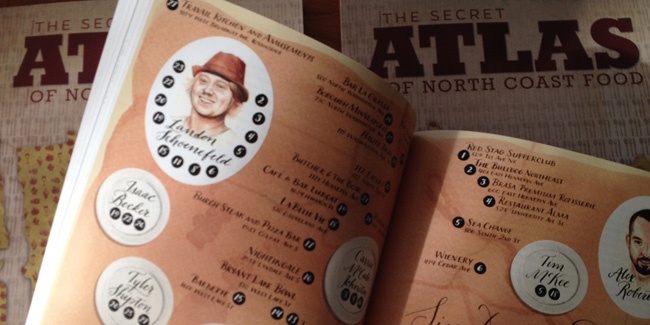 The Heavy Table’s Secret Atlas of North Coast Food came out this week, and we’re excited to share some of its stories on the site.
The Heavy Table’s Secret Atlas of North Coast Food came out this week, and we’re excited to share some of its stories on the site.
Contributor Jason Walker profiled 16 meat shops up and down the Mississippi for the Secret Atlas and so we talked to him this week about the product, the people, and the food he encountered while doing his research. You can catch up with Jason at our signing on the evening of Nov. 21 at Common Good Books, and with many of the rest of the authors at Kitchen Window next week for a special “Behind the Pages” event and for a Nosh-like food fest.
HEAVY TABLE: Why take the time to seek out an independent meat shop?
JASON WALKER: First, I was shocked at the sheer number of meat markets I found in the metro area. Nobody is farther than a few miles from a great meat market, and in rural areas there are plenty as well — tiny towns (Clear Lake, MN, New Albin, IA) will often boast a top-notch meat market because there are enough livestock producers in the area to make it profitable. It’s also encouraging that local co-ops are doing more of their own butchering: The Linden Hills, Seward, and Wedge co-ops in Minneapolis and probably plenty others all make their own sausages.
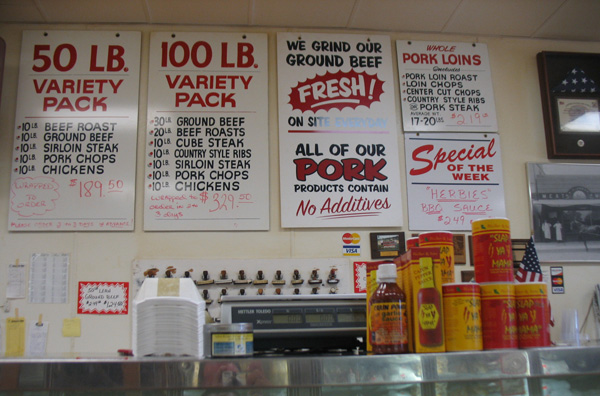
The other factor is the descent of the supermarket meat market. It wasn’t long ago that most big-time grocery chains still did a decent amount of meatcutting in house — many took pride in grinding their own hamburger twice a day, cut their own steaks, and employed actual union butchers. Today most meat is butchered off site, packaged, and shipped into the stores, so the meat-market employees at most large groceries are glorified stock boys who specialize in meat that’s either shipped frozen and later thawed, laden with preservatives, or both.
What indies do better is quality and service. From wieners to steaks, everything is given the same dedication and distinctive touches. When I walked into Mike’s Butcher Shop in West St. Paul I asked about their wieners and the butcher bragged that they used sheep intestine casing… and this was before I told them I was working on the book. Can you imagine the guy at SuperTarget talking proudly to random customers about their use of sheep intestine? Plus indies will custom-cut and -wrap just about anything. Start shopping at independent meat markets and you’ll never be able to go back to Cub or Rainbow because the difference in quality and experience will be so glaring — and for practically the same price, in many cases.
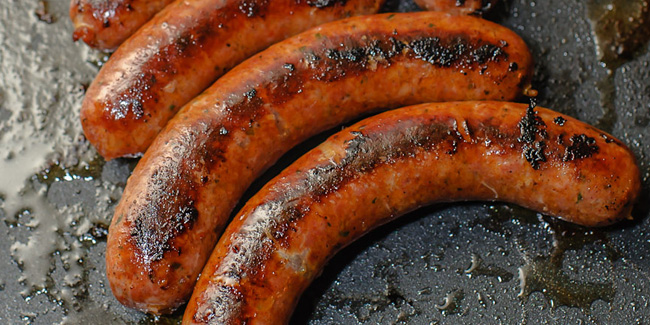
HT: What are some of the more challenging / interesting / delicious things you’ve made using meat shop finds?
JW: Nearly everything I’ve bought went straight on the grill or in a sandwich — quality meat doesn’t need much accoutrement. The myriad flavors of bratwurst are always interesting, because it’s like the butchers try to throw the craziest things in brats and see if they stick: pineapple, hash browns, horseradish, blueberry, and wild rice. to name a few I’ve tried.
Summer sausage is something I rarely ate until I started shopping at small meat markets and it’s been a real revelation. And my family probably ate hot dogs twice a week all summer as I researched the book because each shop I visited had their own spins on the humble wiener that I had to try.
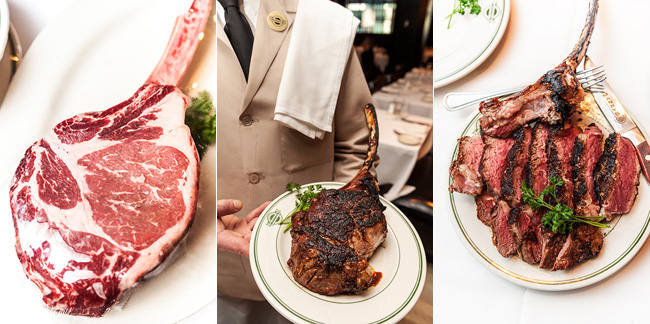
The most interesting thing I found was at Stasny’s Market in St. Paul, when a customer next to me ordered “jellied beef loaf.” As the butcher sliced it I had to ask the guy to repeat what he just ordered, and he said, “Jellied beef loaf. It’s like having the gravy right in there. I like it.” I still haven’t tried that one, I have to admit. Stasny’s also sold frozen rabbit.
Also, Ready Meats in Northeast Minneapolis sells a dynamite red sauce for pizza or pasta. They sell around 60 gallons every week. And I was shocked to learn how many markets mentioned ring bologna as a signature product. The ring bologna competition along the Mississippi River must be pretty intense!
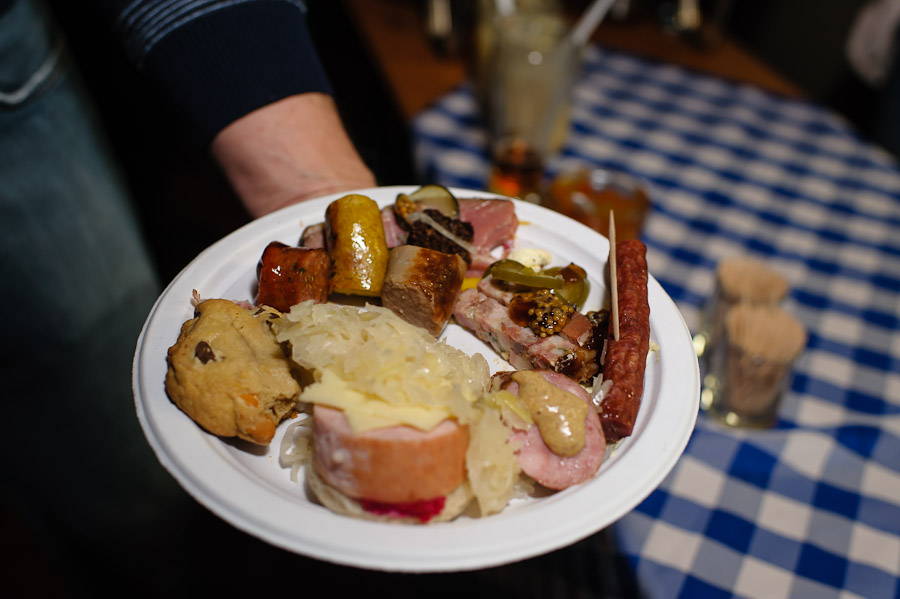
HT: How do independent meat shops tie into the local economy?
JW: They’re basically hiding in plain sight, and unlike many old-fashioned shops or trades I didn’t get the impression any were in danger of dying. Plus locally raised meat is available in the Upper Midwest year-round, and you really can’t say that about too many other fresh products. Most rural meat markets do a nice business processing, too, either from hunters or sustainable farmers who direct-market their meat as grass-fed, organic or whatever. I bought a whole hog two straight years from a farmer who switched processors the second year, and it made a gigantic difference in both the quality and variety despite being essentially the same animal raised under the same conditions. Quality processing is crucial.
HT: Are we particularly lucky here in the Upper Midwest in terms of the meat shops we have and what they have to offer?
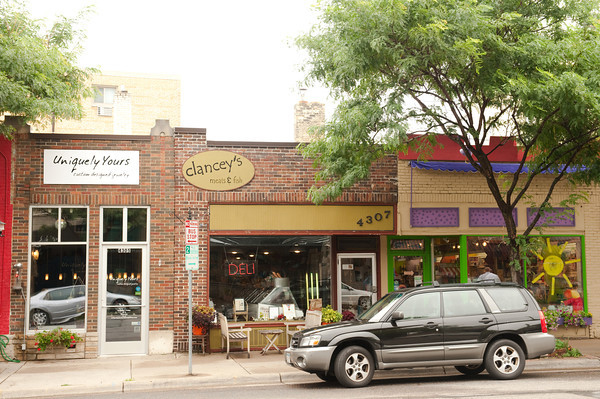
JW: Absolutely. You’ve got meat-and-potatoes values in areas that have relatively large populations, so there is great demand for high-quality meat. Plus this is not ranch or feedlot country. Most livestock produced locally is done so on a smaller, more sustainable scale, which nearly always results in better meat. That’s not to say all old-fashioned meat markets get their meat locally, though, so it’s a good idea to ask them — many still get product from large operations in Nebraska, Kansas, or more traditional cattle- and pork-producing regions. Clancey’s in Minneapolis is the probably the Upper Midwest’s premier example of a locally focused meat market.

HT: What was your favorite meat shop find (in terms of food) in the Cities? How about from your chapter over all?
JW: In the Cities I was most impressed with Mike’s Butcher Shop in West St. Paul. Everything I tried was terrific, and the jerky and wieners were both just exceptional… easily the best wieners I found, plus the owner was a real character. While we were talking people kept coming in and razzing him. It was a real small-town feel.
Overall, McDonald’s Meats in Clear Lake is where I’ve shopped for several years now. They do everything right, and their bacon, jerky, braunschweiger and summer sausage are just incredible, and cheap! If you’ve never had braunschweiger or think you don’t like it, McDonald’s will make you a convert, and a giant log is just a few bucks. My favorite is their jalapeno cheddar summer sausage, and it’s $6 a pound. Just tremendous.
Plus they have the gamut of steaks, chops, an endless array of house-made brats and house-smoked hams, and even locally raised chickens that roast up beautifully. They sometimes even have frozen crappie and sunfish fillets. I can’t walk out of there without a cooler full, and I don’t think I’ve ever spent more than $100 at a time.

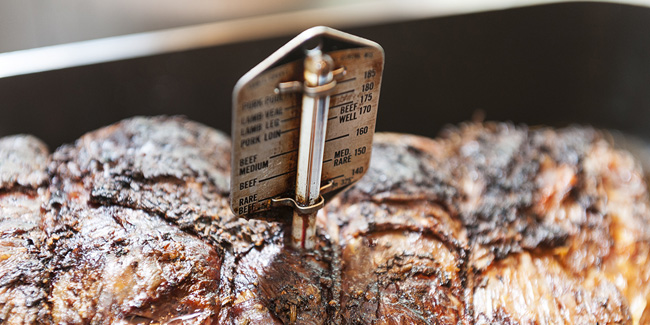
I hope you include the award winning RJ’s in Hudson, WI. They use angus beef and Berkshire pork for their products. They have many types of brats, wieners, meat sticks (yum) and smoke their own hams. They are now making some limited quantities of Italian meats such as capicola. Their summer sausage and bransweiger is delicious. They can be called for special orders, such as that roast you want cut just so, and they get the job done. I feel very pleased and fortunate to have such a great meat market in my community.